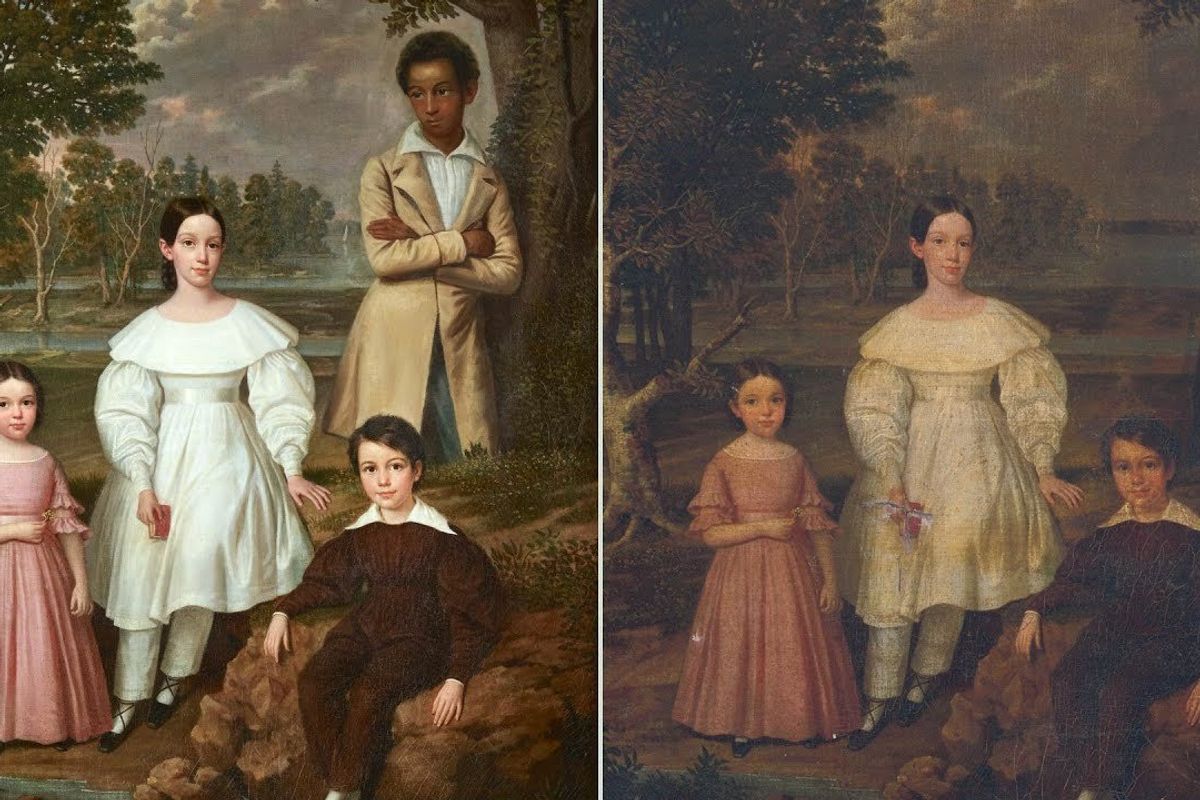Museum reveals a Louisiana painting that had an enslaved child camouflaged for over 100 years
After Bélizaire was sold, he was painted out of the family portrait.

Louisiana painting had enslaved child camouflaged for 100 years.
There are parts of history that are overlooked or forgotten, but the truly astonishing thing is the lengths to which people will go to cover them up. The thing about hiding parts of history, though, is that they always find their way into the light, and that's exactly what happened with a child named Bélizaire.
In 1972, a painting of three white children was donated to the New Orleans Museum of Art by Audrey Grasser, who inherited the family portrait. When she dropped off the painting, she informed the museum that there was an enslaved Black child in the picture that had been painted over.
The painting was never displayed in the museum. It actually sat in the basement for more than 30 years, and when speaking to Audrey's son, Eugene, there's no family story on why the boy was painted over. The Grasser family didn't seem to have much information about the boy at all, but he was important enough to be painted with the enslaver's children.
"The family story was, it was a favorite slave they had that was painted in the picture," Eugene tells The New York Times. "And then for whatever reason, sometime later, he was painted out. No idea why."
It was the determination of Jeremy K. Simien, an art collector and historian, that helped bring the enslaved boy's face and name to light. After finding two different auctions of the same painting, one revealing all four children and an earlier one showing only the white children, Simien got curious. He brought the painting back to Louisiana and brought in someone who finds the records of enslaved people.
It's quite fascinating to see the entire thing unfold. The records of enslaved people aren't kept with birth certificates and such in Louisiana, they're kept with property records. It's a small but breathtaking fact that, even to this day, the records of enslaved people...people, are still stored with property records. It's a sobering reminder of how close we actually are to a history that feels so far away.
After a bit of digging, Louisiana Historian Katy Morlas Shannon found that the enslaved child in the photo was named Bélizaire. He was sold to the Frey family at the age of 6 with his mother and was believed to be a caregiver for the children in the photo with him. But there was some sort of bond between the enslaver and Bélizaire as he traveled with Mr. Frey on his merchant voyages.
The child's relationship with the man who enslaved him raises a few questions that may never fully be answered. If he was such an important member of the family, then why did he get covered up? Clearly, one of the children in the painting was Mr. Frey's son, so why didn't he bring his own child to learn the family trade?
Bélizaire lived with the Frey family helping to care for their children until the wife of his enslaver sold him to another plantation after the death of Mr. Frey. Watch the entire discovery of Bélizaire play out below.
- I made my daughter cry by sharing the history of a local landmark. She needed to hear it. ›
- Taking down statues isn't erasing history—it's making history, literally ›
- A teen student delivered a masterclass on the true history of the Confederate flag ›
- 100 years ago, people were eating things that most of us will never taste. So what happened? - Upworthy ›
- 100 years ago, people were eating things that most of us will never taste - Upworthy ›

